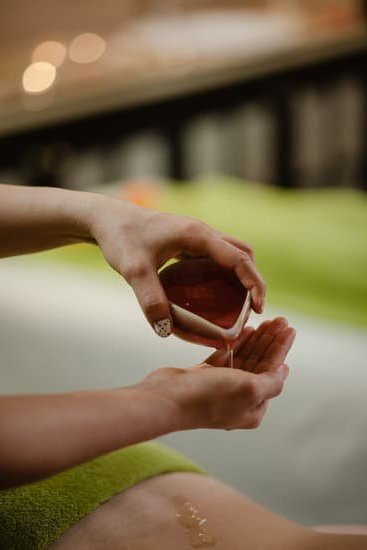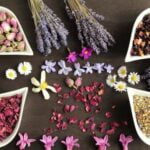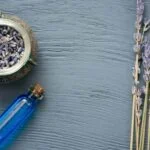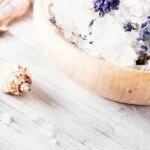Aromatherapy history and origins date back to ancient civilizations where the healing power of scents was recognized and utilized. This article delves into the rich history of aromatherapy, tracing its roots to traditional medicines and practices. From Ancient Egypt to the Renaissance period and modern times, aromatherapy has evolved into a holistic healing practice with a focus on overall well-being.
Ancient civilizations such as the Egyptians and Greeks were among the first to understand and harness the therapeutic properties of essential oils for both rituals and healing purposes. Traditional Chinese Medicine also played a significant role in shaping aromatherapy practices, emphasizing the balance of energy flow within the body through aromatic substances. These early origins laid the foundation for what we now know as aromatherapy.
Through centuries of development and rediscovery, aromatherapy techniques have been refined and integrated into various wellness practices. Key practitioners like Rene-Maurice Gattefosse and Robert Tisserand have contributed to the scientific understanding of essential oils’ benefits. Today, aromatherapy continues to thrive in contemporary wellness settings, offering a natural approach to promoting relaxation, stress relief, and overall health.
Early Origins of Aromatherapy
Aromatherapy, as we know it today, has deep roots in ancient civilizations and traditional medicines. The use of aromatic plants and essential oils for healing and well-being can be traced back thousands of years across various cultures. Here is a look at the early origins of aromatherapy and how it has evolved over time:
- Ancient India: In Ayurveda, the traditional Indian system of medicine, aromatherapy plays a significant role in balancing the doshas (body energies). Essential oils extracted from herbs like sandalwood, ginger, and jasmine were used in massages, baths, and inhalations to promote physical and emotional health.
- Ancient Greece and Rome: The ancient Greeks and Romans also recognized the therapeutic properties of aromatic plants. Hippocrates, known as the father of Western medicine, believed in the power of fragrances to heal both the body and mind. Essential oils like lavender, rosemary, and peppermint were commonly used for their medicinal benefits.
- Traditional Native American Healing Practices: Indigenous peoples of North America have long used plants like sage, cedarwood, and sweetgrass for spiritual rituals and healing ceremonies. These aromatic plants were burned or infused into teas to cleanse energy fields and promote overall wellness.
The early origins of aromatherapy reflect a universal belief in the connection between nature’s fragrances and human well-being. Ancient civilizations intuitively understood the therapeutic effects of essential oils on physical ailments, emotional imbalances, and spiritual practices. As these practices spread through trade routes and cultural exchanges, they laid the foundation for what we now recognize as modern aromatherapy.
Throughout history, aromatherapy has been a constant presence in traditional medicines worldwide. By harnessing the power of plant extracts through distillation methods or infusion techniques, ancient healers were able to create potent remedies that are still valued today for their holistic benefits. The rich history of aromatherapy serves as a reminder of our enduring relationship with nature’s gifts and the profound impact they can have on our health and wellness.
The Influence of Traditional Chinese Medicine on Aromatherapy Practices
Traditional Chinese Medicine (TCM) has had a significant influence on the development and practices of aromatherapy. Dating back thousands of years, TCM has long incorporated the use of aromatic herbs and plants for their therapeutic benefits. In traditional Chinese culture, it is believed that certain scents can help balance the body’s energy, known as qi, and promote overall well-being. This ancient knowledge laid the foundation for the integration of aromatherapy into modern holistic healing practices.
Aromatic Herbs in Traditional Chinese Medicine
In TCM, aromatic herbs such as ginger, cinnamon, and peppermint have been used for their medicinal properties. These herbs are often brewed into herbal teas or used in herbal remedies to address various health concerns.
The unique fragrances of these herbs are believed to have a direct impact on the body’s meridians and organs, helping to restore balance and harmony within the body. Additionally, various essential oils derived from these herbs are also used in acupuncture treatments and massage therapies to enhance their healing effects.
Aromatherapy Techniques in Traditional Chinese Medicine
In TCM, aromatherapy techniques such as moxibustion involve burning dried mugwort leaves to create aromatic smoke that is believed to stimulate energy flow and promote healing. Similarly, acupressure points on the body may be stimulated with specific essential oils to target specific ailments or imbalances. By incorporating aromatherapy practices into traditional Chinese medicine modalities, practitioners aim to optimize the therapeutic benefits and enhance the overall wellness outcomes for their patients.
Modern Integration of TCM Principles in Aromatherapy
As interest in holistic healing continues to grow, modern practitioners of aromatherapy are blending traditional Chinese medicine principles with contemporary aromatherapy practices. This fusion allows for a more comprehensive approach to health and well-being by addressing both physical symptoms and emotional well-being through the use of essential oils and aromatic blends.
By understanding the historical roots of traditional Chinese medicine within aromatherapy, practitioners can offer a more holistic approach to healing that honors ancient wisdom while embracing modern scientific advancements.
Aromatherapy in Ancient Egypt
Ancient Egyptian Beliefs and Practices
Ancient Egypt is renowned for its advanced knowledge of herbal medicine, including the use of essential oils for healing purposes. In Egyptian society, aromatherapy was deeply intertwined with their beliefs in the power of gods and the afterlife. Essential oils were considered sacred substances that could not only heal the body but also purify the spirit. Priests and healers often used aromatic oils during religious ceremonies, embalming practices, and medical treatments.
Symbolism and Significance of Essential Oils
Essential oils held significant symbolism in Ancient Egypt, with each oil associated with specific gods or goddesses believed to have healing abilities. For example, frankincense was commonly used in rituals dedicated to Ra, the sun god, while myrrh was linked to Isis, the goddess of health. The Egyptians also used essential oils such as rosemary, cedarwood, and lavender for their antiseptic properties and aromatic qualities in embalming practices to preserve the bodies of the deceased for the afterlife.
Incorporation Into Medical Treatments
In addition to religious rituals, essential oils played a crucial role in medical treatments in Ancient Egypt. Healers would create ointments, balms, and salves using various aromatic oils to treat common ailments like headaches, digestive issues, skin conditions, and respiratory problems.
The Egyptians believed that inhaling or applying these fragrant substances could restore harmony to the body and promote overall well-being. The use of essential oils for both spiritual and physical healing demonstrates the profound influence aromatherapy had on ancient civilizations like Egypt.
The Renaissance Period
During the Renaissance period, there was a resurgence of interest in the healing properties of essential oils and aromatic substances, marking a pivotal moment in the evolution of aromatherapy techniques. Influenced by the knowledge passed on from ancient civilizations, scholars and physicians during this era began to delve deeper into the study of plant essences and their therapeutic benefits.
The art of distillation played a significant role in extracting essential oils from botanical sources, allowing for a more concentrated form of plant extracts to be used in various healing practices.
One key figure during the Renaissance period who contributed to the rediscovery and evolution of aromatherapy techniques was Paracelsus, a renowned physician and alchemist. He believed in the concept of “like cures like” and advocated for using natural remedies, including essential oils, to treat ailments and maintain well-being. Paracelsus’s work laid the foundation for incorporating aromatic substances into medical practices, paving the way for future developments in aromatherapy.
The Renaissance period also saw an increased emphasis on personal hygiene and grooming rituals, leading to the use of fragrant oils and perfumes not only for therapeutic purposes but also as a means of enhancing one’s appearance and social status. Aromatherapy during this time became intertwined with notions of beauty and self-care, showcasing how scents could be used not just for physical healing but also for emotional well-being and overall wellness.
This period marked a significant shift towards recognizing the holistic benefits of aromatherapy practices in promoting health and vitality.
Modern Aromatherapy
In recent years, the field of aromatherapy has seen significant growth and recognition for its therapeutic benefits. Aromatherapy is not only used for relaxation and stress relief but also in pain management, skincare, and improving overall mental well-being. With a focus on natural remedies and alternative therapies, aromatherapy has become a popular choice for individuals seeking a more holistic approach to health.
Key figures in the history of modern aromatherapy include Rene-Maurice Gattefosse, who coined the term “aromatherapy” in the early 20th century, and Robert Tisserand, known for his contributions to aromatherapy practices and education. Their work has laid the foundation for the science behind essential oils and their beneficial properties. As modern research continues to explore the chemistry and effects of essential oils, aromatherapy remains a relevant practice in contemporary wellness, offering a natural and holistic approach to healing.
| Aspect | Details |
|---|---|
| Origin | Ancient civilizations |
| Benefits | Therapeutic benefits including pain management and skincare |
| Pioneers | Rene-Maurice Gattefosse and Robert Tisserand |
Key Aromatherapy Practitioners and Pioneers
Aromatherapy, as we know it today, has been shaped by the contributions of key practitioners and pioneers who have played a significant role in its development over the years. One of the most notable figures in aromatherapy history is Rene-Maurice Gattefosse, a French chemist who is often referred to as the “father of aromatherapy.” Gattefosse’s research and experiments with essential oils led to the discovery of their therapeutic properties and laid the foundation for modern aromatherapy practices.
Another prominent figure in the history of aromatherapy is Robert Tisserand, an English aromatherapist who is considered one of the leading authorities on essential oils. Tisserand’s work has focused on promoting safe and effective use of essential oils through his writings and teachings. His book, “The Art of Aromatherapy,” has become a classic text in the field and continues to influence practitioners around the world.
These pioneers have not only contributed to the understanding of essential oils but have also helped elevate aromatherapy as a respected holistic healing practice. Their dedication to research, education, and advocacy has played a crucial role in shaping the way we view and utilize aromatic plant extracts for health and wellness purposes.
| Aromatherapy Pioneer | Contribution |
|---|---|
| Rene-Maurice Gattefosse | Known as “father of aromatherapy,” discovered therapeutic properties of essential oils |
| Robert Tisserand | Leading authority on essential oils, promoted safe use through teachings and writings |
The Science Behind Aromatherapy
Aromatherapy, despite its ancient roots and traditional practices, also has a scientific foundation that explains how essential oils work to provide therapeutic benefits. Understanding the chemistry behind aromatherapy can help individuals appreciate the effects these natural remedies have on their physical and emotional well-being.
Essential oils are highly concentrated plant extracts that contain compounds with various properties, such as antimicrobial, anti-inflammatory, or sedative effects. These compounds interact with the body through inhalation or topical application, affecting the central nervous system and physiological processes.
To delve deeper into the science behind aromatherapy, it is essential to explore the chemical composition of essential oils. These volatile substances are composed of molecules like terpenes, alcohols, esters, phenols, and ketones that contribute to their distinct fragrance and therapeutic properties.
For example, lavender essential oil contains linalool and linalyl acetate, which have calming and anxiety-reducing effects when inhaled. On the other hand, tea tree oil is known for its antibacterial and antifungal properties due to its high concentration of terpinen-4-ol.
Moreover, research on aromatherapy has shown promising results in validating its efficacy in promoting relaxation, reducing stress levels, improving sleep quality, alleviating pain, and managing various health conditions. Studies have demonstrated that certain essential oils can modulate neurotransmitter activity in the brain or reduce inflammation in the body. As more scientific evidence supports the use of aromatherapy as a complementary therapy alongside conventional treatments, it continues to gain recognition in modern healthcare practices and holistic wellness approaches.
Aromatherapy in Contemporary Wellness
Throughout history, the practice of aromatherapy has evolved and adapted to different cultures and beliefs, ultimately becoming a widely accepted form of holistic healing in contemporary wellness. Today, aromatherapy is integrated into various wellness practices such as spa treatments, home remedies, and stress relief techniques. The use of essential oils for their therapeutic properties has gained popularity not only for their pleasant scents but also for their potential health benefits.
Spas around the world offer a range of aromatherapy treatments, from massages to facials, incorporating essential oils to enhance relaxation and promote overall well-being. The soothing fragrances of lavender, chamomile, and eucalyptus are commonly used in spa settings to create a calming atmosphere and reduce stress levels. Whether through diffusers or topical application, the power of aromatherapy in promoting relaxation and rejuvenation cannot be understated.
In addition to professional spa treatments, many individuals have incorporated aromatherapy into their daily routines as part of home remedies for various ailments. From using peppermint oil for headaches to lavender oil for sleep support, people are exploring the natural healing properties of essential oils for common health concerns.
Furthermore, the practice of aromatherapy has become an accessible tool for managing stress and promoting emotional well-being in our hectic modern lifestyles. As we continue to explore the benefits of essential oils and their therapeutic effects on mind and body, the ancient roots of aromatherapy history and origins remain an integral part of our ongoing journey towards holistic wellness.
Frequently Asked Questions
Where Did Aromatherapy Originated?
Aromatherapy originated in ancient civilizations such as Egypt, China, and India. These cultures used aromatic plant extracts for medicinal, spiritual, and cosmetic purposes. The practice has evolved over centuries to become the popular holistic therapy it is today.
Who Is the Father of Aromatherapy?
René-Maurice Gattefossé is widely regarded as the father of aromatherapy. He accidentally discovered the healing properties of lavender oil when he used it to treat a burn on his hand. His research and writings in the early 20th century helped popularize aromatherapy as a legitimate therapeutic practice.
What Belief Is Aromatherapy Based On?
Aromatherapy is based on the belief that essential oils derived from plants can promote physical, emotional, and mental well-being. These powerful plant extracts are thought to have various healing properties that can positively impact the body and mind when inhaled or applied topically.
The practice emphasizes a natural approach to health and wellness by harnessing the benefits of nature’s gifts.

Are you looking for a natural way to improve your health and wellbeing?
If so, aromatherapy may be the answer for you.





